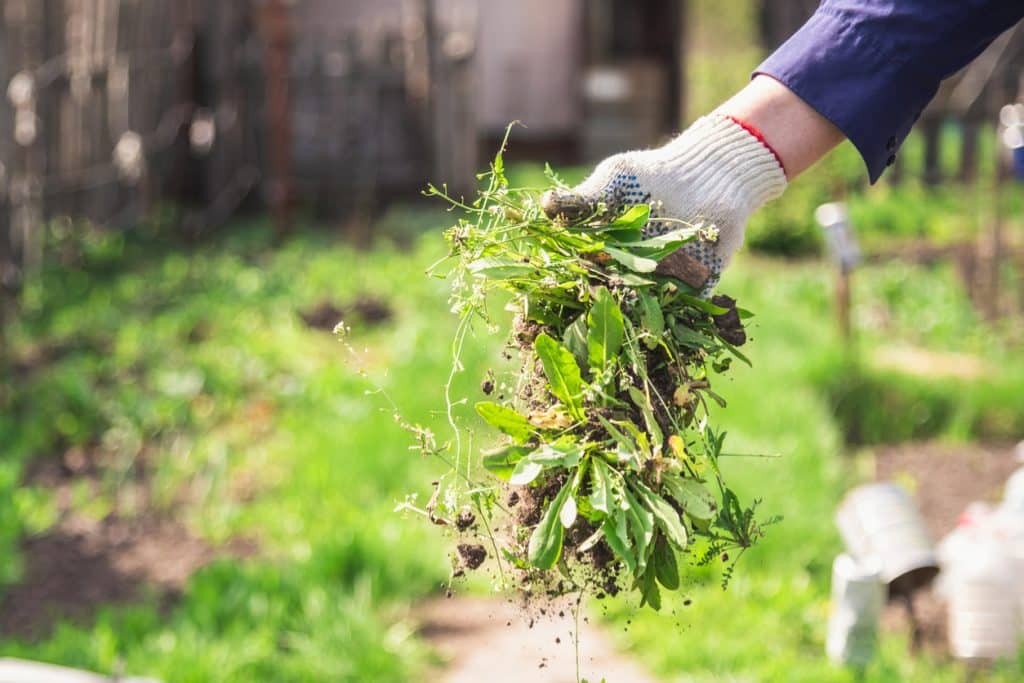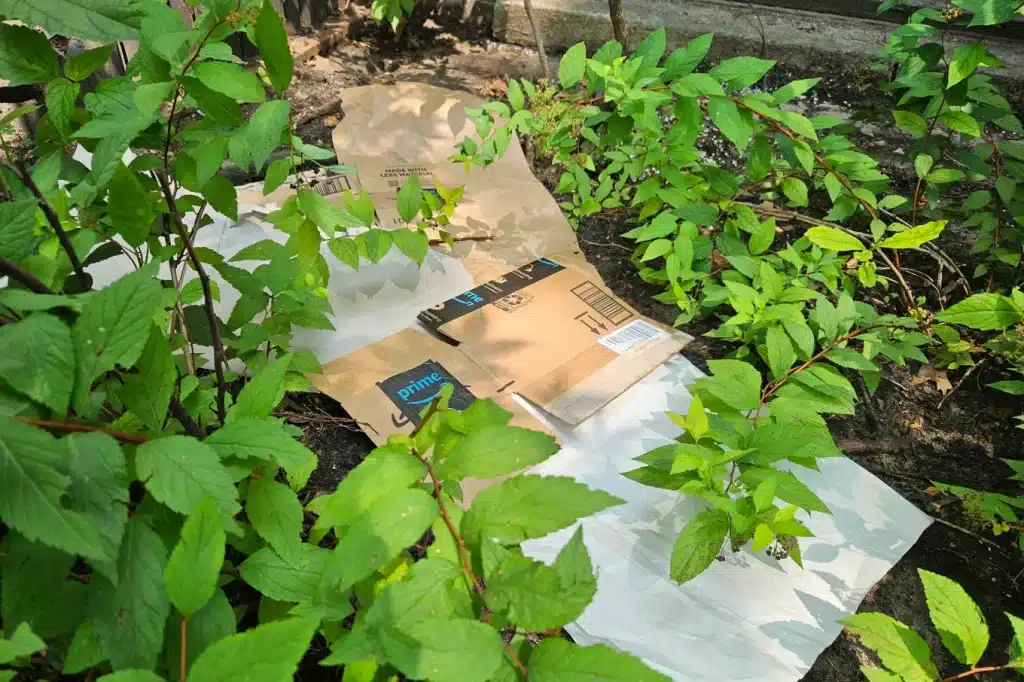Tired of pulling weeds every weekend? There’s an easier way! Stop weeds with cardboard and take control of your garden without back-breaking labor. This no-dig gardening trick is perfect for busy parents who love a tidy yard but don’t have hours to spend on maintenance.
Using cardboard to smother weeds is an eco-friendly, low-cost method that improves soil health while keeping unwanted plants at bay. Plus, it’s a fantastic way to recycle all those delivery boxes piling up in your home. Ready to give it a try? Here’s everything you need to know about this simple, effective technique.
Why Weeds Are a Problem
Weeds are more than just an eyesore. They compete with your plants for water, nutrients, and sunlight. Left unchecked, they can quickly take over your garden and stunt the growth of flowers, veggies, and other plants. Traditional weed removal methods, like hand-pulling or using chemical herbicides, can be time-consuming or harmful to the environment. That’s why many gardeners are turning to natural methods to control weeds. Stop weeds with cardboard and you’ll enjoy a weed-free garden without toxic chemicals or endless weeding sessions.

How Cardboard Suppresses Weeds
The idea behind this method is simple: cover the weeds with cardboard to block sunlight. Without light, weeds can’t grow, and over time, they decompose into the soil. Unlike plastic or synthetic weed barriers, cardboard is biodegradable and enriches the soil as it breaks down. Plus, it helps retain moisture, reducing the need for frequent watering. When you stop weeds with cardboard, you create a natural barrier that prevents new weeds from sprouting while improving the overall health of your garden.
Choosing the Right Cardboard
Not all cardboard is created equal! To get the best results, use plain, brown corrugated cardboard. Avoid glossy, printed, or heavily coated cardboard, as these materials contain chemicals that can leach into the soil. Thick cardboard works best because it takes longer to break down, giving you extended weed control. If you’ve got large boxes from online shopping, they’re perfect for this purpose. Just remove any plastic tape or staples before using them in your garden.
Preparing Your Garden
Before you lay down your cardboard, take a few minutes to prep your garden. Start by cutting down any large weeds or grasses to make it easier to cover them. There’s no need to pull them out—just trim them close to the ground. Next, wet the soil thoroughly. This helps the cardboard stay in place and speeds up decomposition. If you’re applying cardboard around existing plants, cut holes in the cardboard so they can continue growing.
How to Apply the Cardboard Layer
- Lay the cardboard flat – Cover the entire area where you want to stop weeds with cardboard. Overlap the edges by at least 6 inches to prevent weeds from sneaking through gaps.
- Water the cardboard – Soak it well to help it settle into the soil. This also encourages decomposition.
- Add mulch or compost – Cover the cardboard with a 2–3 inch layer of mulch, wood chips, or compost. This adds extra weight to keep it in place while improving soil fertility.
- Monitor and maintain – Over time, the cardboard will break down. If you notice any weeds poking through, simply add another layer of cardboard and mulch.

Benefits of Using Cardboard in the Garden
There are plenty of reasons why more gardeners are choosing to stop weeds with cardboard:
- Eco-friendly – It recycles waste while reducing the need for chemical herbicides.
- Improves soil health – As the cardboard decomposes, it adds organic matter to the soil.
- Saves time and effort – No more endless weeding sessions!
- Retains moisture – Keeps soil damp longer, reducing watering needs.
- Encourages earthworms – Earthworms love cardboard, and their tunnels help aerate the soil.
Using Cardboard in Different Garden Settings
This method works in almost any garden setting. Whether you have a vegetable patch, flower beds, or even a new garden area you want to develop, you can stop weeds with cardboard. If you’re starting a new raised bed, place cardboard at the bottom before adding soil to prevent weeds from growing up into your plants. In pathways, a layer of cardboard beneath gravel or wood chips keeps weeds at bay for months.
Common Mistakes to Avoid
To get the best results, avoid these common mistakes:
- Using the wrong cardboard – Avoid colored, glossy, or plastic-coated boxes.
- Skipping the mulch – Mulch helps hold the cardboard down and improves soil health.
- Leaving gaps – Overlapping the edges ensures weeds don’t find their way through.
- Forgetting to water – Moist cardboard decomposes faster and stays in place better.
How Long Does It Take for Cardboard to Break Down?
The decomposition time depends on the thickness of the cardboard and environmental factors like moisture and temperature. On average, a layer of cardboard lasts between 3 to 12 months. By the time it fully breaks down, most of the weeds underneath will have died off, and your soil will be richer and healthier. If necessary, you can add a fresh layer each season to keep your garden weed-free. Stop weeds with cardboard and enjoy a natural, eco-friendly way to maintain healthy soil.
Other Uses for Cardboard in the Garden
Beyond weed control, cardboard has several other gardening benefits:
- Sheet mulching – A great way to prepare a new garden bed.
- Composting – Cardboard is a good source of carbon in compost piles.
- Pathway lining – Prevents weeds from growing between pavers or gravel.
- Lasagna gardening – Layer it with compost and soil for a nutrient-rich garden.
So, if you’re looking for an easy, eco-friendly way to control weeds, it’s time to stop weeds with cardboard. This simple no-dig gardening method saves time, improves soil health, and helps you recycle materials that would otherwise go to waste. Whether you’re maintaining an existing garden or starting fresh, cardboard is a cost-effective, low-maintenance solution that benefits both your plants and the environment. Give it a try, and you’ll soon see the difference in your weed-free, thriving garden. So, grab those old boxes and start transforming your garden today—your plants (and your back) will thank you!
Do you want to learn more tips & tricks on all things gardening? Just visit our Gardening category and read on!











